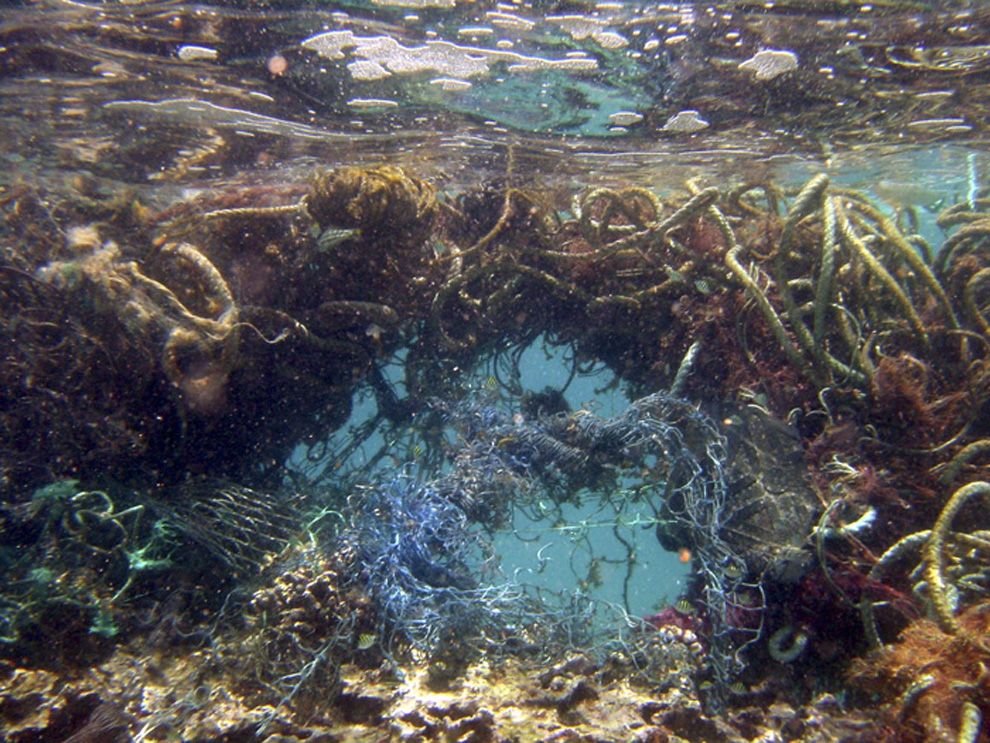Plastic takes a long time to degrade and, as it does, it breaks down into smaller and smaller pieces known as microplastics.
These microplastics are pervading the world’s water sources, invisible to the naked eye, but fully present in more than 83% of cups of drinking water around the world, according to a study conducted by Orb Media that surveyed dozens of countries.
That means that most people in the world are ingesting microplastics when they drink water, a pretty disgusting prospect, especially since plastic becomes a magnet for toxins once in the water, according to John Hourston of the Blue Planet Society who spoke with Global Citizen.
Take Action: Pledge to Stop Using Disposable Plastic
How Did This Happen?
Scenes of floating plastic mounds clogging ocean and river currents have gained prominence in recent years, but this is hardly a new phenomenon.
Humans have created 8.3 billion metric tons of plastic since 1950, a weight equivalent to 1 billion elephants.
More than 75% of this plastic has been thrown away, left to disintegrate throughout the global environment. Each year, an estimated 8 million metric tons of plastic enter the oceans, which is like emptying a garbage truck of plastic into an ocean every minute.

As plastic breaks down into microplastics, it tends to blanket the sea floors, where it can disrupt bottom-feeding ecosystems.
Read More: Why You Should Probably Never Use a Plastic Straw Again
It also ends up in drinking water supplies, where it has largely unknown effects on the human body, according to the team at Orb Media.
“We don’t know what the [health] impact is and for that reason we should follow the precautionary principle and put enough effort into it now, immediately, so we can find out what the real risks are,” Dr. Anne Marie Mahon at the Galway-Mayo Institute of Technology, who conducted the research, told the Guardian.
“Once they are in the nanometre range they can really penetrate a cell and that means they can penetrate organs, and that would be worrying,” she added.
What Can Be Done About It?
The best way to rid water of microplastics is to use an effective filtration device for your tap water, according to the experts who worked with Orb Media.
There are lots of different kinds of filters on the market, and some are considerably more expensive than others, sometimes running into the hundreds of dollars.
The best filters involve reverse osmosis technology, according to a scientific review in New York, but many filters in the $20 to $50 range are still effective and have less costly components.
For instance, Soma filters strive to reduce plastic by using more sustainable materials and ZeroWater offers a stainless steel filter that uses no plastic.
Fully avoiding microplastics may be impossible because of how small some fibers can get, according to the Guardian.
Bottled water might seem to be a way out of this problem, but the team at Orb Media found that bottled water brands are also contaminated with microplastics.
Plus, buying bottled water just adds to plastic pollution around the world, including the prevalence of microplastics.
Read More: 7 Ways to Cut Junk Plastic From Your Life
Every minute of every day, a million bottles of water are consumed around the world and this number is rising exponentially, potentially reaching half a trillion annually by 2021.
Buying another disposable water bottle is not the way to avoid microplastics.
The best way to avoid them, in fact, is to stop buying plastic water bottles and reduce plastic from your life in other ways so that plastic stops accumulating in environments, the scientists at Orb Media found.
Read More: Shocking Photos Show Extent of Plastic Pollution in Caribbean
The team wrote that some easy ways to reduce your plastic footprint are to use public transit instead of a personal car because fibers from tires are a primary source of microplastics; avoid using latex and acrylic paints; and buy sustainable, biodegradable materials like a bamboo toothbrush.
Global Citizen campaigns to reduce plastic production and consumption and you can take action on this issue here.